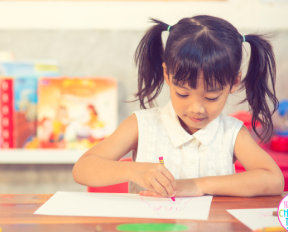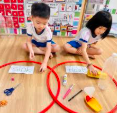Creative hands-on activities like crafts can be powerful tools in helping young learners understand and remember educational concepts. Children often thrive when learning is playful and engaging, and incorporating crafts into lessons offers an enjoyable way to reinforce what they’ve learned. From boosting fine motor skills to strengthening memory and comprehension, craft-based learning adds value in early education settings.
The Power of Hands-On Learning
Young children learn best through doing. When they cut, glue, paint, or shape materials, they’re not just creating art—they’re actively engaging with ideas. For instance, building a paper clock can reinforce time-telling skills, while crafting animals from different habitats can support a science lesson. These hands-on experiences help children connect abstract concepts with real-world applications.
Making Learning Memorable
Crafts encourage children to revisit and repeat knowledge in a meaningful way. A project like making a weather wheel after a science unit on climate helps solidify what they’ve learned. The physical act of crafting builds pathways in the brain that support recall. Plus, children often feel proud of what they create, which leads to a positive emotional connection to the lesson.
Encouraging Expression and Creativity
Using crafts in learning allows space for personal expression. Even if two students are working on the same project—like a storybook puppet—they might choose different colors, designs, or characters. This freedom not only sparks creativity but also deepens understanding, as children make personal decisions about how to represent what they’ve learned.
Crafting Across Subjects
Crafts can be integrated into nearly any subject:
-
Math: Making bead patterns or paper shapes to understand symmetry, counting, or sequencing.
-
Language: Crafting alphabet books or character masks to build vocabulary and story comprehension.
-
Science: Creating life cycle diagrams with materials like felt, yarn, and paper.
-
Social Studies: Designing cultural symbols, traditional dress, or simple maps to explore communities and geography.
Building Skills Beyond the Lesson
Aside from academic gains, crafts also support developmental growth. Cutting, coloring, and assembling parts improve hand-eye coordination and fine motor control. Group projects promote teamwork, communication, and patience—skills that benefit children throughout life.
Simple Tips for Educators and Parents
-
Connect crafts to the lesson. Be intentional about how the activity supports the concept.
-
Use recycled or everyday materials. Paper plates, buttons, string, and cardboard can become educational treasures.
-
Allow creative freedom. Let children personalize their work to keep it meaningful.
-
Reflect together. After crafting, talk about what they learned and how it connects to the topic.
Conclusion
Crafts offer more than just a break from routine—they are a vibrant way to make learning come alive. By weaving creativity into educational moments, children gain a deeper understanding of concepts while building confidence, independence, and a love for learning. Whether in the classroom or at home, craft-based activities are a joyful and effective approach to reinforcing what children are discovering every day.


